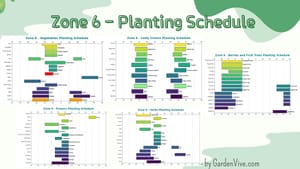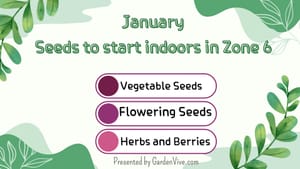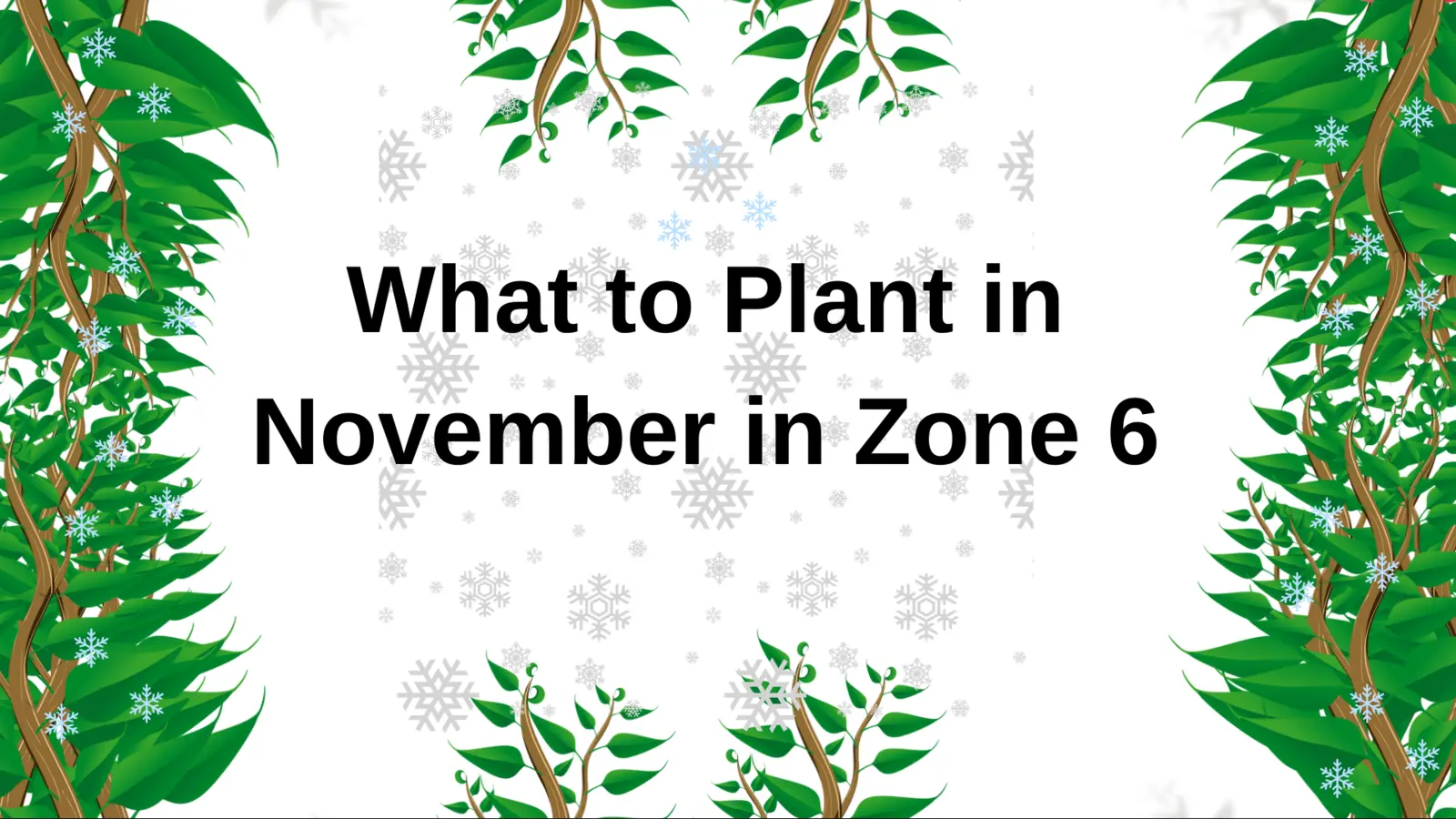
We need to plan our November planting so we can enjoy the crops for the whole winter. With careful planning, you can also set a beautiful stage for your spring garden. This is considered fall gardening, but I am specifically considering those plants that will perform the best if planted in November in Zone 6.
Tip: Do not forget to check the weather. If the first frost is already done, you need to choose hardy plants and in November we know it's pretty cold. If early winter feels colder than usual, add mulch or row covers for extra insulation.
I never thought of making a planting calendar for Zone 6. There are very few online resources that provide a well-organized guide on what to plant for a specific month. Yes, some sites offer planting guides based on zip code, but they often fall short of being truly helpful. This is why I take my time out to make this planting guide, hoping you will enjoy it.
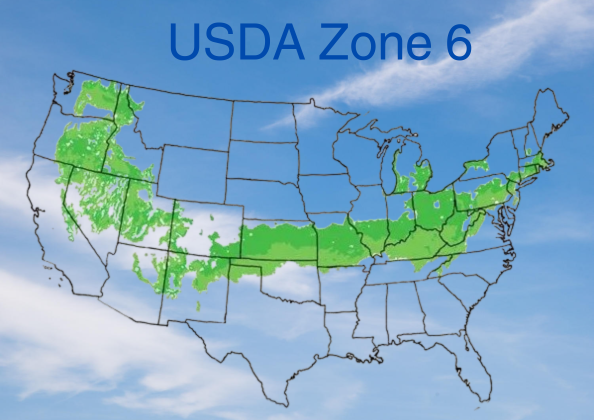
Those who have missed the November planting can follow the December Planting.
November Planting Guide for Zone 6 - What to Plant
We need to choose plants that are hardy and can tolerate frosts. Considering the climate and a few other factors, I have made this planting schedule for November for all the gardeners of Zone 6.
You need to decide if you're planting for an early spring harvest, soil health, or spring blooms. In my list, you will get everything covered.
November soil might be dense and cool. What you need to do is remove all the old roots left in the ground soil. Add some organic matter to increase the drainage. (It will increase the soil health as well)
The days will become shorter so I am considering plants that do not demand long hours of light.
Considering all the factors, I hand-picked plants to add to your November planting. To make it easy to read, I have categorized the plants into several categories:
- Leafy Greens
- Roots and Vegetables
- Flowering Plants
- Herbs
- Cover crops
If you are my regular reader, you might know this is the way I make planting guides.
To make this planting guide useful, I have added the proper spacing and variety recommendations.
Tips: It is normal that for a specific year the fall may start lately or slightly earlier. If it is still warm even at the beginning of November, wait for a week and go for planting. For early cold, you can consider this planting guide and start planting a bit earlier. A warm climate will reduce the harvesting time and a cooler climate will increase the harvesting time.
I know that considering zone number for deciding what to plant is not the best thing, but somehow you can grow a lot of common plants around every region if they fall in the same zone.
Leafy greens to plant in November in Zone 6
Did you know you can scroll the table side-wise on mobile devices to get the full insight?
| Plant Name | Planting Method | Spacing | Depth of Planting | Harvesting Time | Maintenance Difficulty | Variety Recommendation |
|---|---|---|---|---|---|---|
| Spinach | Direct Seed Sowing | 6 inches apart | 1/2 inch | Early Spring | Easy | ‘Bloomsdale’, ‘Tyee’ |
| Kale | Transplanting | 8-12 inches apart | 1/2 inch | Early Spring | Easy | ‘Winterbor’, ‘Lacinato’ |
| Mâche (Corn Salad) | Direct Seed Sowing | 4-6 inches apart | 1/4 inch | Late Winter to Early Spring | Easy | ‘Gentil Rouge’, ‘Mâche d’Hiver’ |
| Arugula | Direct Seed Sowing | 6 inches apart | 1/4 inch | Late Winter | Easy | ‘Rocket’, ‘Sylvetta’ |
| Mustard Greens | Direct Seed Sowing | 6-8 inches apart | 1/2 inch | Early Spring | Easy | ‘Green Wave’, ‘Southern Giant Curled’ |
| Swiss Chard | Direct Seed Sowing | 6-8 inches apart | 1/2 inch | Early Spring | Easy | ‘Bright Lights’, ‘Fordhook Giant’ |
| Claytonia (Miner's Lettuce) | Direct Seed Sowing | 4-6 inches apart | 1/4 inch | Late Winter to Early Spring | Easy | ‘Miner’s Lettuce’ |
| Endive/Escarole | Direct Seed Sowing | 8-10 inches apart | 1/4 inch | Early Spring | Moderate | ‘Frisée’, ‘Batavian’ |
| Winter Lettuce Varieties | Direct Seed Sowing | 6-8 inches apart | 1/4 inch | Early Spring | Easy | ‘Winter Density’, ‘Valdor’ |
| Collard Greens | Direct Seed Sowing | 12-18 inches apart | 1/2 inch | Early Spring | Easy | ‘Georgia’, ‘Vates’ |
To play it safe avoid planting Endive/Escaro (It will need more caring during heavy frosts).
The harvesting time for leafy greens mentioned in the above table is the mature harvesting time. But you can harvest earlier if you like to eat them earlier. I harvest earlier as it tastes better to me when harvested a bit earlier.
Roots and vegetables for November Planting in Zone 6
| Plant Name | Planting Method | Spacing | Depth of Planting | Harvesting Time | Maintenance Difficulty | Variety Recommendation |
|---|---|---|---|---|---|---|
| Carrots | Direct Seed Sowing | 2-3 inches apart | 1/4 inch | Late Spring to Early Summer | Easy | ‘Nantes’, ‘Imperator’ |
| Beets | Direct Seed Sowing | 3-4 inches apart | 1/2 inch | Early Summer | Easy | ‘Detroit Dark Red’, ‘Chioggia’ |
| Radishes | Direct Seed Sowing | 1-2 inches apart | 1/2 inch | 3-4 weeks after sowing | Easy | ‘Cherry Belle’, ‘French Breakfast’ |
| Turnips | Direct Seed Sowing | 4-6 inches apart | 1/2 inch | Early Spring | Easy | ‘Golden Ball’, ‘Purple Top White Globe’ |
| Garlic | Direct Seed Sowing | 4-6 inches apart | 2 inches | Next Summer | Easy | ‘Hardneck’, ‘Softneck’ |
| Onions | Transplanting | 4-6 inches apart | 1 inch | Late Summer | Moderate | ‘Walla Walla’, ‘Yellow Granex’ |
| Parsnips | Direct Seed Sowing | 4-6 inches apart | 1/2 inch | Late Spring | Moderate | ‘Hollow Crown’, ‘Javelin’ |
| Sweet Potatoes | Transplanting | 12-18 inches apart | 3-4 inches | Late Summer | Moderate | ‘Beauregard’, ‘Georgia Jet’ |
| Potatoes | Direct Seed Sowing | 12 inches apart | 4 inches | Mid-Summer | Easy | ‘Yukon Gold’, ‘Red Pontiac’ |
Selecting the right variant for roots and vegetables is important for Zone 9 Fall gardening. (They will perform a lot better)
Are you interested in planting other plants with vegetables as a companion? Check my detailed guide here: Best companion plants for vegetable garden
Here is a bonus tip who grow asparagus: How and when to trim back asparagus
What Flowering Plants We Can Plant in November - Zone 6
In this table, I have added columns for blooming time and the type (perennial or annual). The best planting methods are given but if you wish you can change the planting method. As you are going to plant the flowering plants in November, I have calculated the growing time, and depending upon that you can find the planting method. Direct seed sowing at this time will take a longer time to grow.
Those who are looking for only perennial plants can check: Perennial plants for zone 6
| Plant Name | Planting Method | Spacing | Depth of Planting | Blooming Time | Perennial or Annual | Maintenance Difficulty | Variety Recommendation |
|---|---|---|---|---|---|---|---|
| Pansies | Direct Seed Sowing / Transplanting | 6-8 inches apart | 1/4 inch | Spring to Early Summer | Annual | Easy | ‘Cool Wave’, ‘Matrix’ |
| Snapdragons | Direct Seed Sowing / Transplanting | 6-12 inches apart | 1/4 inch | Spring to Early Summer | Annual / Biennial | Moderate | ‘Rocket’, ‘Madame Butterfly’ |
| Winter Aconite | Direct Seed Sowing | 6-12 inches apart | 1 inch | Late Winter to Early Spring | Perennial | Easy | ‘Eranthis hyemalis’ |
| Crocus | Direct Seed Sowing | 3-4 inches apart | 2-3 inches | Spring | Perennial | Easy | ‘Yellow Mammoth’, ‘King of the Striped’ |
| Primrose | Direct Seed Sowing / Transplanting | 8-12 inches apart | 1/4 inch | Spring | Perennial | Easy | ‘Cowslip’, ‘Primula vulgaris’ |
| Violas | Direct Seed Sowing / Transplanting | 6-8 inches apart | 1/4 inch | Spring to Early Summer | Annual | Easy | ‘Sorbet’, ‘Cool Wave’ |
| Ornamental Kale | Direct Seed Sowing / Transplanting | 12-18 inches apart | 1/4 inch | Fall to Winter | Annual | Easy | ‘Winterbor’, ‘Osaka’ |
| Chrysanthemum | Transplanting | 18-24 inches apart | 1-2 inches | Fall | Perennial | Moderate | ‘Mum’s the Word’, ‘Sheffield Pink’ |
Herbs to be planted in November in Zone 6
| Plant Name | Planting Method | Spacing | Depth of Planting | Perennial or Annual | Maintenance Difficulty | Variety Recommendation |
|---|---|---|---|---|---|---|
| Garlic | Direct Seed Sowing | 4-6 inches apart | 2-3 inches | Perennial (usually grown as annual) | Easy | ‘Softneck’, ‘Hardneck’ |
| Parsley | Direct Seed Sowing / Transplanting | 6-8 inches apart | 1/4 inch | Biennial | Easy | ‘Giant of Italy’, ‘Curly Leaf’ |
| Chives | Direct Seed Sowing / Transplanting | 8-12 inches apart | 1/4 inch | Perennial | Easy | ‘Common Chives’, ‘Garlic Chives’ |
| Thyme | Direct Seed Sowing / Transplanting | 12-18 inches apart | 1/4 inch | Perennial | Easy | ‘English Thyme’, ‘Lemon Thyme’ |
| Oregano | Direct Seed Sowing / Transplanting | 12-18 inches apart | 1/4 inch | Perennial | Easy | ‘Greek Oregano’, ‘Italian Oregano’ |
| Sage | Direct Seed Sowing / Transplanting | 18-24 inches apart | 1/4 inch | Perennial | Moderate | ‘Common Sage’, ‘Golden Sage’ |
| Mint | Direct Seed Sowing / Transplanting | 12-18 inches apart | 1/4 inch | Perennial | Easy | ‘Peppermint’, ‘Spearmint’ |
| Basil | Direct Seed Sowing / Transplanting | 12 inches apart | 1/4 inch | Annual | Moderate | ‘Sweet Basil’, ‘Genovese’ |
Herbs need regular watering in the root-developing phase. It does not mean that you have to water a lot. Just water when the soil is dry. Frequent watering and a lot of watering are different. I can not explain watering for each plant here as this article is only about what to plant.
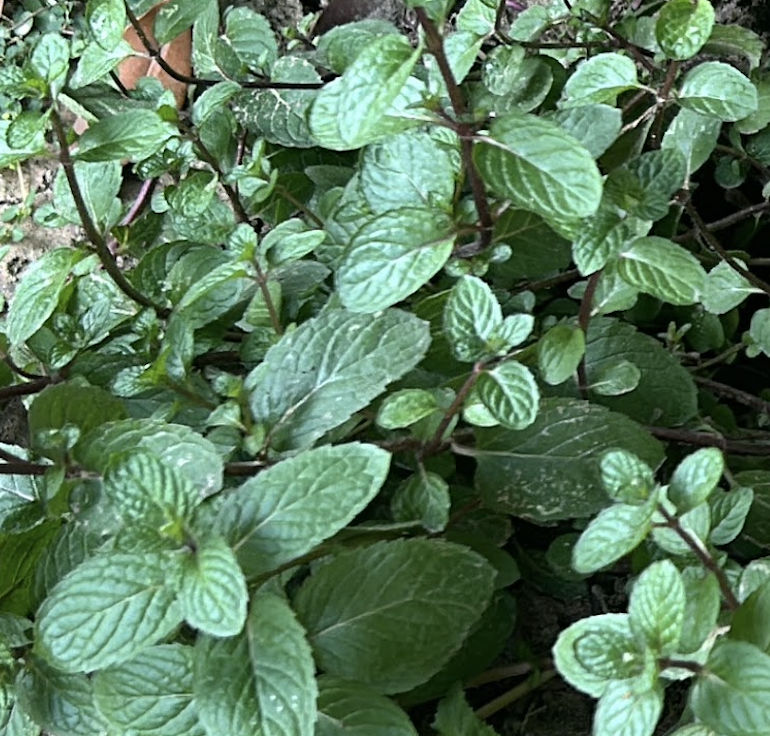
Cover Crops for Zone 9 in November
| Plant Name | Planting Method | Spacing | Depth of Planting | Maintenance Difficulty | Variety Recommendation | Benefits |
|---|---|---|---|---|---|---|
| Winter Rye | Direct Seed Sowing | 6-8 inches apart | 1-2 inches | Easy | ‘Cereal Rye’ | Improves soil structure, prevents erosion |
| Hairy Vetch | Direct Seed Sowing | 6-8 inches apart | 1-2 inches | Moderate | ‘Austrian Winter’ | Nitrogen fixation, improves soil fertility |
| Crimson Clover | Direct Seed Sowing | 8-12 inches apart | 1/4-1/2 inch | Easy | ‘Dixie’ | Weed suppression, nitrogen fixation |
| Field Peas | Direct Seed Sowing | 6-8 inches apart | 1-2 inches | Easy | ‘Austrian Winter’ | Nitrogen fixation, soil health improvement |
| Buckwheat | Direct Seed Sowing | 8-10 inches apart | 1-2 inches | Easy | ‘Common Buckwheat’ | Suppresses weeds, attracts pollinators |
| Oats | Direct Seed Sowing | 6-8 inches apart | 1-2 inches | Easy | ‘Cover Crop Oats’ | Soil moisture retention, erosion prevention |
| Radishes (Daikon) | Direct Seed Sowing | 6-8 inches apart | 1/2 inch | Easy | ‘Groundhog’ | Improves soil structure, nutrient cycling |
| Barley | Direct Seed Sowing | 6-8 inches apart | 1-2 inches | Easy | ‘Spring Barley’ | Soil erosion control, organic matter addition |
Cover crops help to improve the soil health. The benefits are given beside plant names.
If you find this article helpful, subscribe to the site, it's free! (As it takes a lot of time to create this type of planting table) I will be back with another fresh article on Zone 6 gardening.

